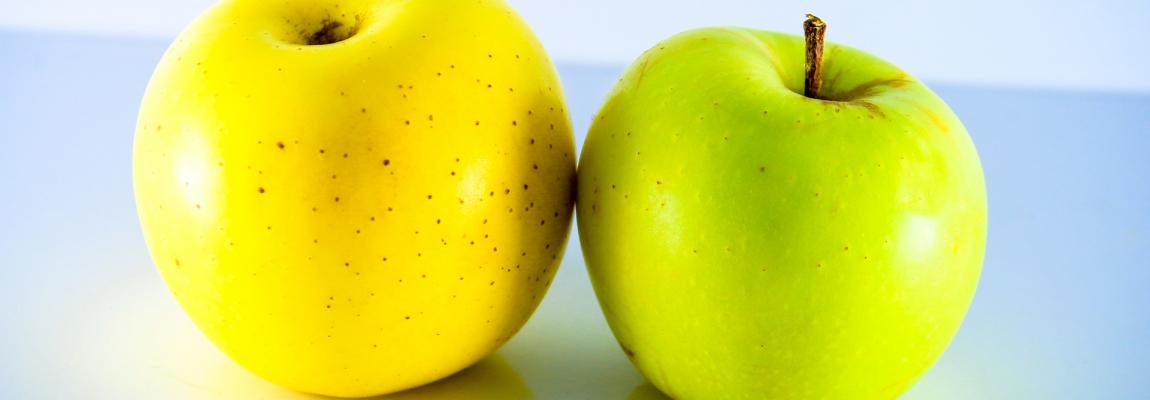
Detection of visual defect in food products
04/04/2017

How to precisely measure a visual defect: visual analysis of apples browning
Over storage, the visual aspect of some fruits sometimes changes. For example, the flesh of some apples can turn brown. To try to prevent or reduce this browning effect and avoid the appearance of this visual defect, different treatements can be applied to fruits. The efficiency of these treatments is evaluated based on a visual inspection of apples flesh, and an accurate measurement is necessary to compare the efficiency of various treatments.
A study has been conducted with IRIS visual analyzer on 10 batches of apples subjected to different treatments aimed at slowing down the browning of their flesh. To evaluate the extent of this visual defect, the analysis with IRIS visual analyzer consists of taking a picture of apples cut in 2 pieces then to process and analyze the images.
Thanks to image pre-processing, the area corresponding to the visual defect can be precisely isolated and the proportion of damaged flesh is thus measured objectively, as a percentage of the total surface of flesh. To evaluate the visual quality of new samples of apple, a quality control card was built up by setting a maximum percentage of visual defect that can be accepted, for example maximum 1% of brown surface on the overall flesh surface.
Therefore, the visual inspection of fruits can be rapidly conducted and the visual quality accurately assessed.
For more information on the visual analysis of defects in food products, request application note ANI02 about the quantification of apples flesh browning.
